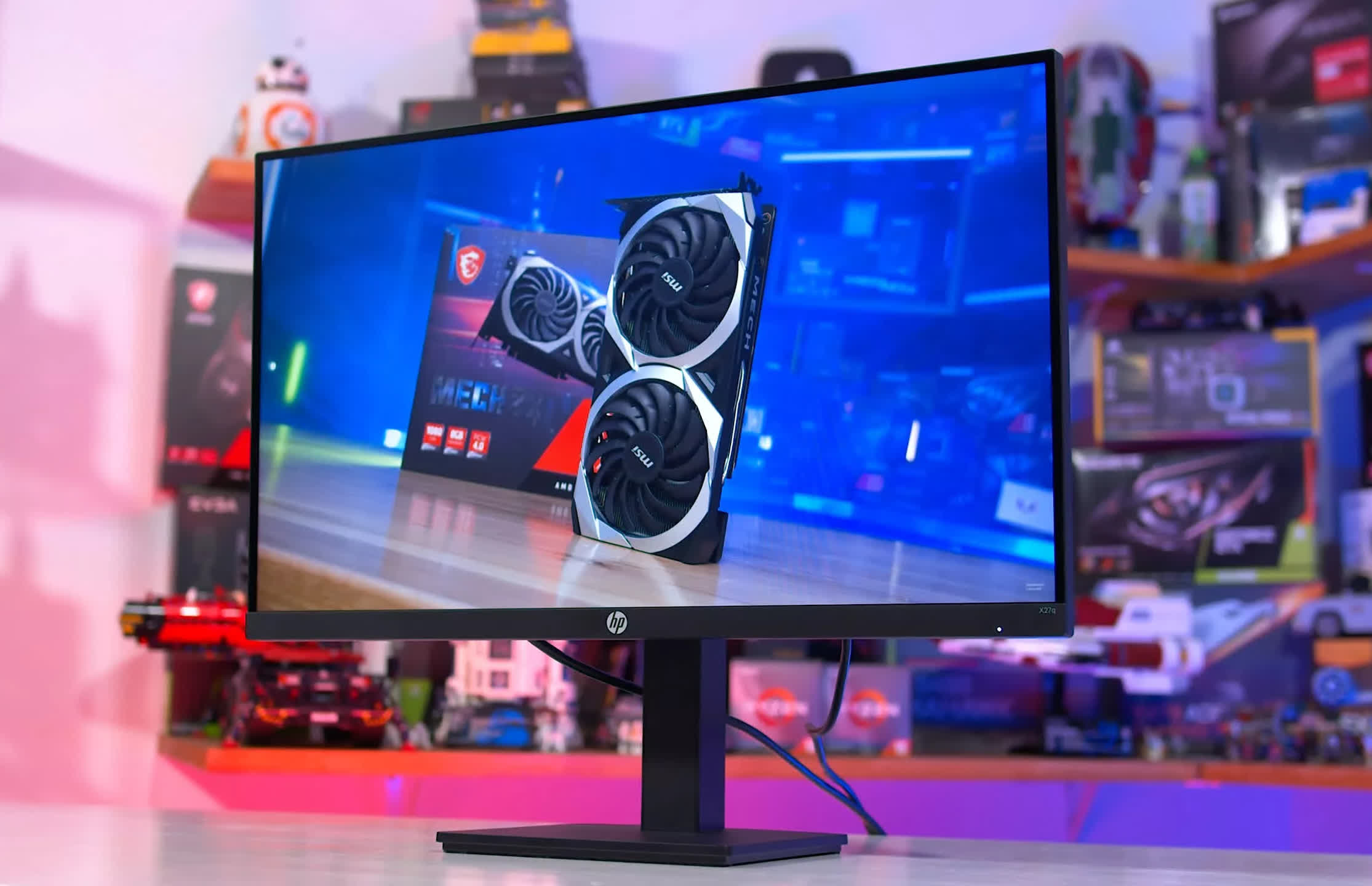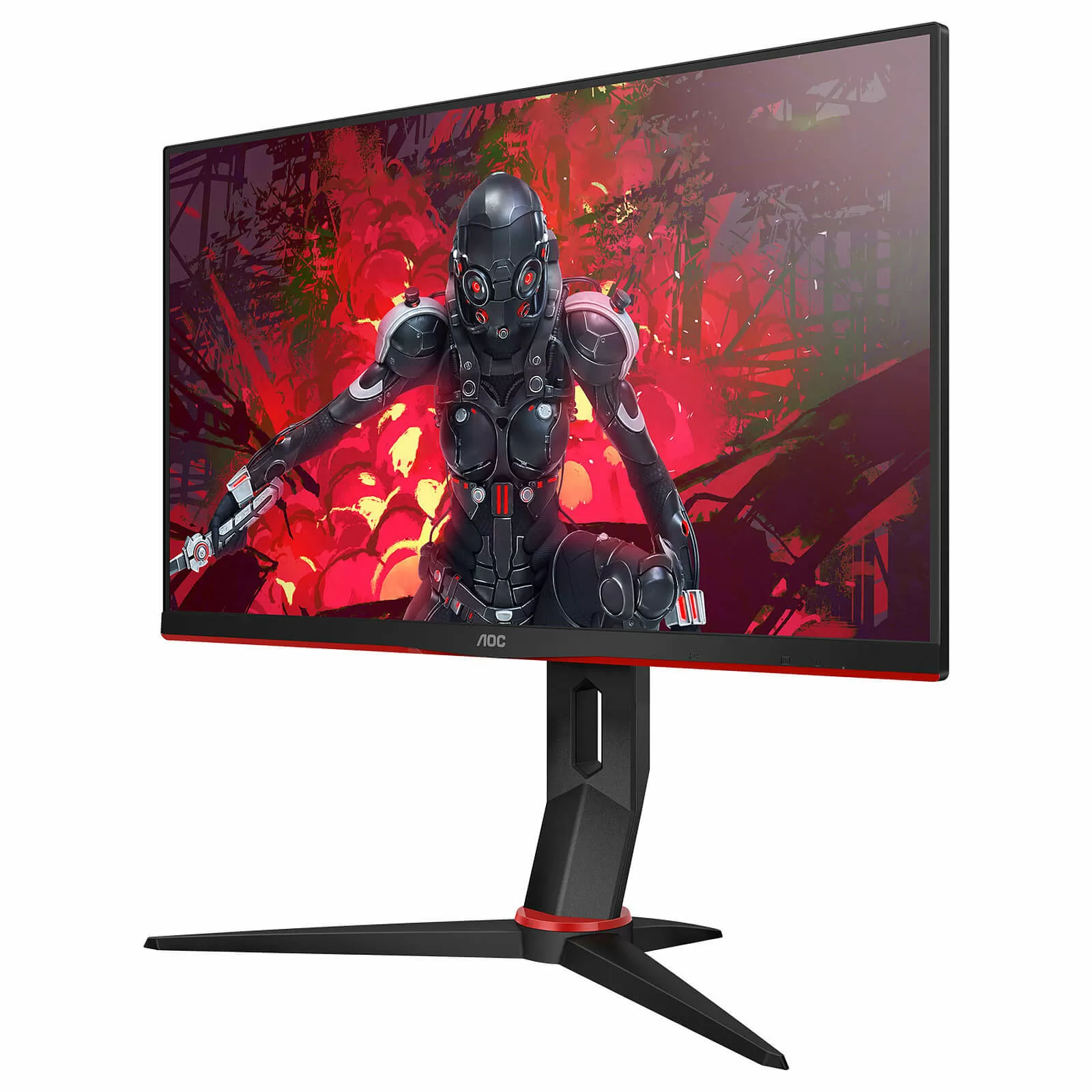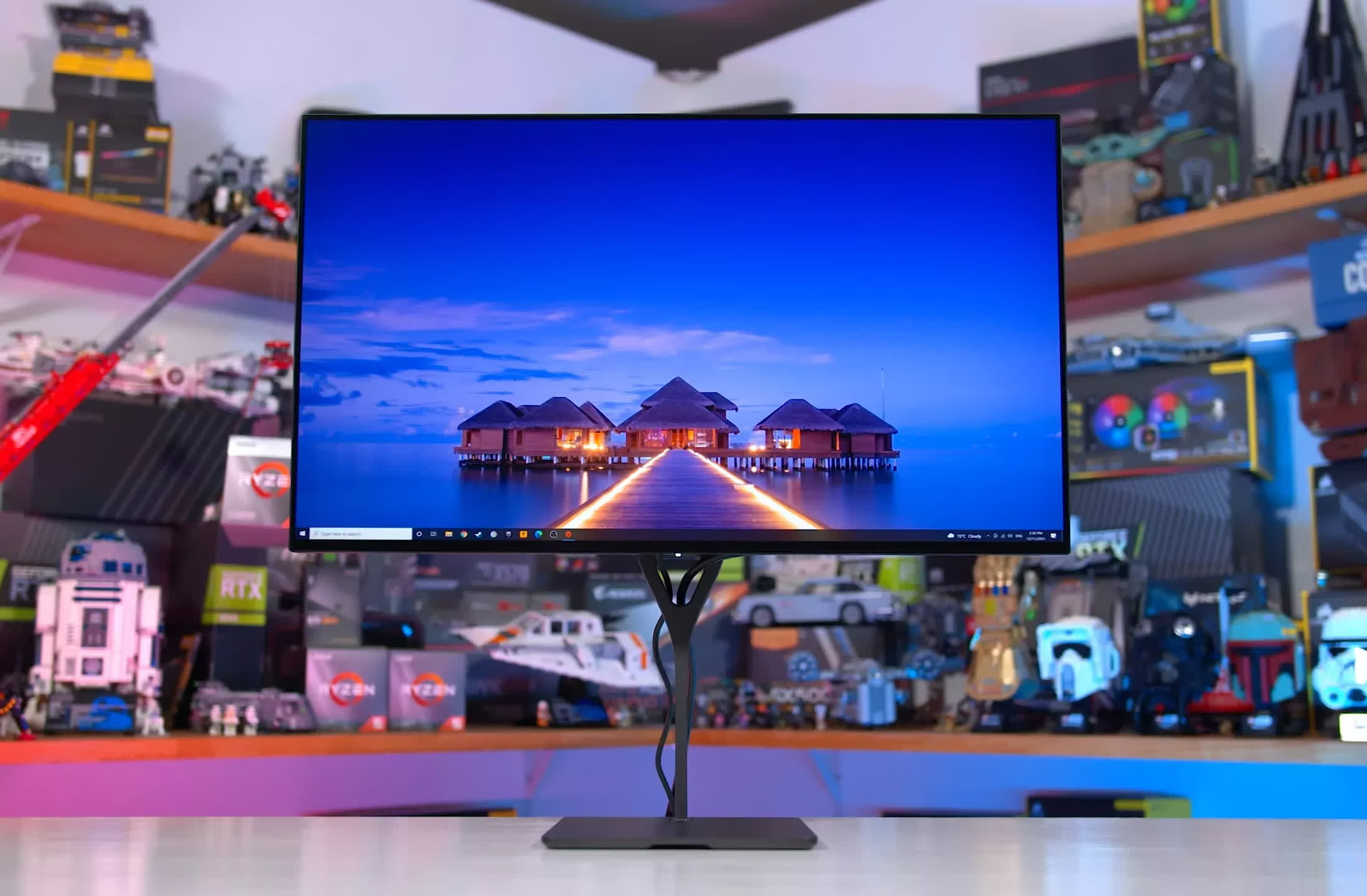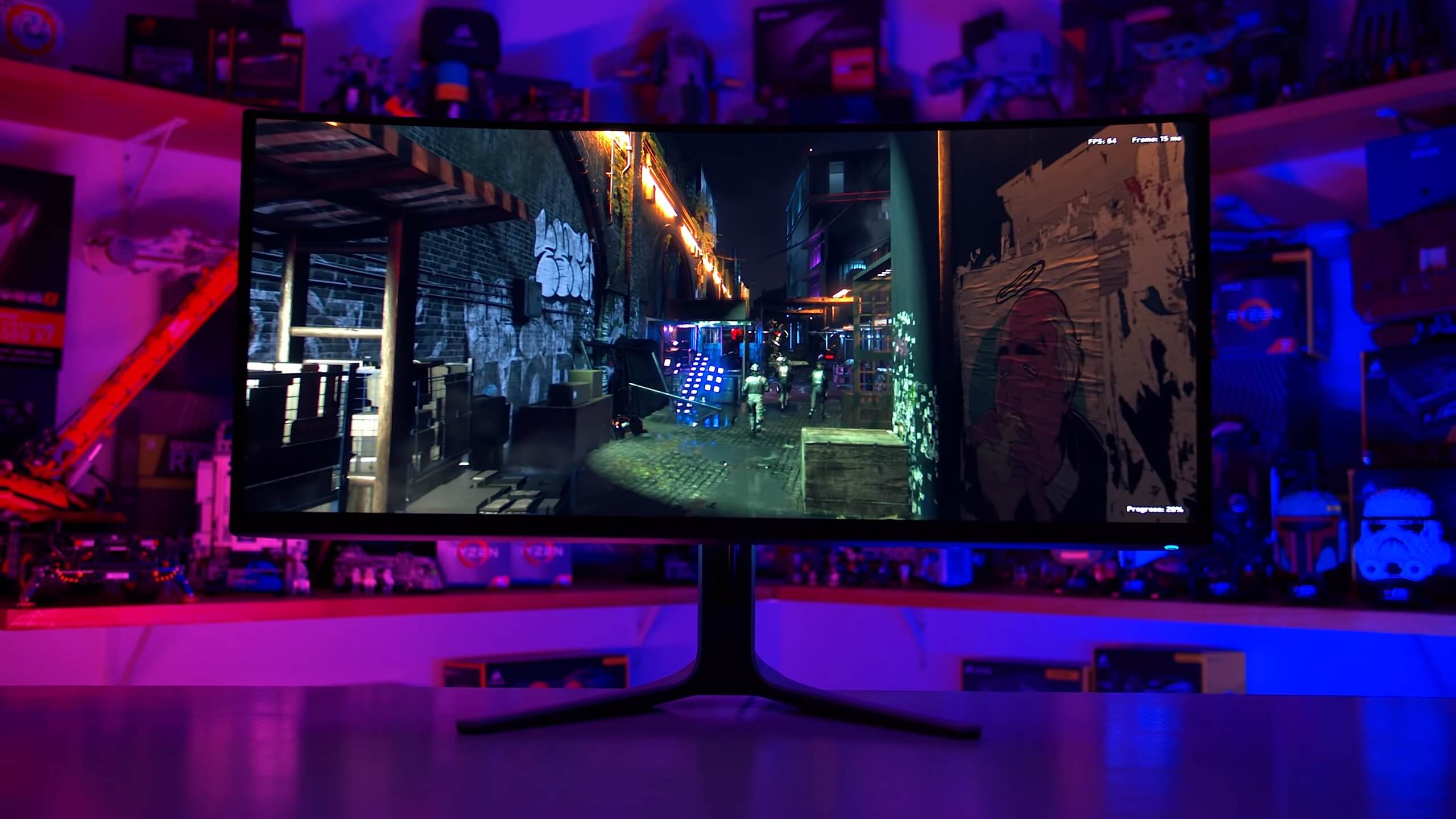See our latest update to this buying guide: The Best Gaming Monitors
We've been testing and reviewing gaming monitors and putting together recommendations for distinct categories including 1080p, 1440p and 4K gaming monitors for the past few years. In this guide, we're going to go through everything we've learned so far and all the latest models we tested to give you comprehensive advice on gaming monitor shopping.
Also worth mentioning, if you're not sure what monitor category is best for you, but you do have a specific budget in mind, a recent feature discusses the best monitors to buy at each price point between $100 and $1,000.
Our monitor testing methodology was updated this past year, testing 60+ displays. As we've discussed before, we tend to discuss and recommend only the monitors we've tested and know to be good, or monitors that are very similar to products we have tested (use the same panels). It's always worth going back and checking out the dedicated monitor reviews we produce for more in-depth thoughts on each, but most importantly the recommendations below are the byproduct of our testing results and research.
We've grouped monitors in five categories: 1080p, 1440p, 4K, ultrawide and HDR, with a few key recommendations on each, depending on the level of refresh rate you are targeting, display size and budget.
Also see:
- The Best 1440p Gaming Monitors: Late 2022
- Best HDR Gaming Monitors
- The Best Gaming Monitors... in $100 Increments
Masthead credit: u/Noble3781 at r/ultrawidemasterrace
- Best 1440p Value
- Best 1440p @ 240Hz
- Best 1080p
- Best 1080p Value
- Best 4K 27-inch
- Best 4K 32-inch
- Best Ultrawide
- Best HDR Gaming
Best Value 1440p Gaming Monitor
HP X27q 27"

If you're after a 1440p gaming monitor, the first question you need to ask yourself is what sort of 1440p monitor do you want, because there are a ton of products on the market today, covering many refresh rates, sizes, panel types and price points. This can make buying a 1440p monitor daunting, but also there are so many options that there should be something for everyone, including budget shoppers.
The way we see it, there are three main classes of 1440p monitors to consider: if you're after a budget gaming display at 1440p, we recommend a medium refresh ~165Hz IPS for under $300. If you want something a bit better with higher performance, around $400 will get you an upgrade pick in the same medium refresh class. For high-end shoppers, we can start talking about today's 240Hz 1440p options.
Starting with the budget class, for most people this is where the best bang for buck in the entire monitor market is found today and pricing continues to become more attractive as well.
The HP X27q, which we fully reviewed just a few weeks ago, is insanely good value at just $253. Pricing tends to fluctuate between $250 and $270 and for that price you get a 27-inch 1440p 165Hz IPS display with all the usual modern features like adaptive sync support for all of today's GPUs.
Before in this category we recommended the Gigabyte M27Q, but the HP X27q is a better monitor for several reasons. First, it's cheaper, which at this level is a huge price saving – and it performs just as well in key areas like response time performance. Second, it uses a regular RGB subpixel layout, whereas the M27Q uses BGR. This affects text clarity, with the win here going to the HP's more traditional layout. And third, you still get the benefits of an IPS display like excellent viewing angles and solid color quality.
The downsides to the X27q are that the contrast ratio isn't great, though no different to other budget monitors like the LG 27GL83A and Dell S2721DGF; and that the color gamut isn't as wide as today's best gaming monitors. You also get decent speed, not at the level of the best IPS panels of today, but for $260 we think HP are nailing the basics and then some.
Upgrade Pick: MSI Optix MAG274QRF-QD

The upgrade choice for people wanting 1440p 165Hz but at better image quality all round is the MSI Optix MAG274QRF-QD which we've been recommending for a while and continues to be a great choice at $420.
It is $165 more than the X27q, so it won't make sense for everyone, but for that extra cash you get faster response times, a better contrast ratio, a much wider color gamut that is genuinely great for color accurate productivity work, and solid backlight strobing support. Clearly this is a more versatile monitor that can do productivity + gaming, and if you're in luck it's been up to $50 cheaper, so look out for sales.
Best 1440p Gaming Monitor @ 240Hz
Gigabyte M27Q-X or Samsung Odyssey G7

Even if you don't have the GPU horsepower to run games at 240 FPS just yet, getting a 240Hz monitor will provide you with heaps of room for hardware upgrades, a better desktop app experience thanks to the higher refresh and lower latency, plus these monitors tend to pack all the performance of lower tier products.
There are two products that we think are hard to ignore in this category right now: the Gigabyte M27Q X is a versatile IPS choice at $500, and the Samsung Odyssey G7, a gaming-focused powerhouse at $600. Depending on your needs, either of these two monitors will have the performance and features you are after.
For most people, we'd choose the M27Q X. We love the versatility that the IPS panel brings and at $500 it's extremely affordable for what it does. Mere months ago this sort of performance would cost $650 at a minimum. In our review, we said the M27Q X is as good as products that cost $200 more and that's still true today. It offers great response times in line with today's typical fast IPS panels, a wide color gamut, great viewing angles and solid brightness. The fact that it's a flat panel, compared to the Odyssey G7's curve is also preferable for non-gaming tasks, web browsing or productivity work.

The downsides to the M27Q X are that it's not as fast as the Odyssey G7 and doesn't have nearly as good of a contrast ratio, which affects black levels. The Samsung G7 is also semi-HDR capable with average performance, whereas the M27Q X is no good for HDR content, though neither are true HDR monitors.
If you want a gaming-first monitor and prioritize speed, a single overdrive mode experience, and contrast ratio, then the Odyssey G7 is a great choice. Both sizes (27" and 32") are typically available for $600 or less, and to this day it's the best VA panel we've seen and one of few monitors that can deliver excellent black levels and fast response times at the same time.
However there are some drawbacks. The 1000R curvature is very curved, so it's not great for productivity work that may appear distorted on such a panel. It also can suffer from poor uniformity, scanlines and the occasional flicker – though to what degree you suffer can be unit dependent. It would have been nice if Samsung could address these QA issues, but no such revision has been made.
One More Thing...

There is one more monitor worth mentioning in this segment. The Asus ROG Swift PG279QM is an excellent monitor that arguably provides the best performance of any 1440p 240Hz display, but its high price tag of $750 is hard to justify in today's market. It's not $250 better than the M27Q X, though if you do want the absolute best, it could be worth considering.
Best 1080p Gaming Monitor
ViewSonic Omni XG2431 24"

If you're after a premium monitor for esports gaming, the go-to choice at the moment appears to be the ViewSonic XG2431, a 1080p 240Hz IPS monitor with advanced blur reduction features. Going on trusted reviews from sources like TFT Central, this is a great product for competitive gaming and appears to be decent value, too, at just $310 – less than the ~$500 monitors we used to recommend in this segment.
What are the strengths of the XG2431? The big ones are response times and backlight strobing. ViewSonic's PureXP mode is highly tunable, and can even be controlled via a strobe utility on PC. The results are excellent for motion clarity, even when this uses an IPS panel which used to lose to TN monitors in this regard.
The XG2431 has received Blur Busters 2.0 certification, which is a certification scheme we actually trust. Even general color quality seems quite good from this display. The drawbacks to this monitor are mostly in areas like contrast ratio and color gamut, which are average but still usable for gaming.
Best Value 1080p Gaming Monitor
AOC 24G2 24"

We think 1080p remains a suitable choice if you want to spend less than $200 and you're after an entry-level monitor to get started with PC gaming. Amazingly, we still can't find a better bang for buck 1080p 144Hz IPS gaming monitor than the AOC 24G2, which we've been recommending for many years now and today is being sold for just $170. Same goes for its larger brother, the very similar 27G2.
The AOC 24G2 offers great response time performance in its class, solid color quality, and handy features like a height adjustable stand that you don't always get at this price. The overall package is nicely balanced between gaming performance and image quality, so we're comfortable continuing to recommend it.
The downsides to the 24G2 are relatively few, thankfully. There are two variants, the 2019 era and 2020 era models, but both are great, so it's not something to worry about and we believe most being sold today are 2019 era units.
Best 27-inch 4K Gaming Monitor
Gigabyte M28U / Odyssey G7 S28 / MSI Optix MAG

Gaming at 4K remains a high-end category that requires a decently powerful gaming PC or a current-gen console to take advantage of what it offers, and there are many more options available than previous years and lots of good stuff to consider.
The first choice to make in the 4K market is sizes: 27-inch monitors tend to be more affordable and offer better performance. However, 32-inch monitors are arguably even better suited for this resolution.
For 27-inch buyers we're lumping three monitors together because they are basically the same: the Gigabyte M28U, Samsung Odyssey G7 LS28, and MSI Optix MAG281URF. All three use the same 28-inch 4K 144Hz IPS panel from Innolux, and effectively deliver the same response time performance. It's actually a rare case where different monitors use the same panel and perform the same, usually we see different optimizations depending on the manufacturer, but that's not the case here.

These monitors deliver great IPS response time performance and you get a single overdrive mode experience, which means you don't need to tweak settings depending on the refresh rate you're using.
The 4K IPS panel is great for productivity work, it has an average contrast ratio for an IPS, decent coverage of DCI-P3, and very crisp text quality. It hits a nice balance between gaming and productivity which gives it some versatility, although brightness could be better in its SDR mode.
To choose between these products we'd simply pick the one you like the most in terms of design or whichever is cheaper in your region, since they're almost the same. There are some exceptions though, the M28U for example only has 24 Gbps HDMI 2.1 ports, so it's not a great choice for PS5 gamers, but for PC gamers it has the best factory calibration. The MSI monitor was a bit weaker for factory calibration, but has no HDMI issues; and neither does the Samsung variant.
The Upgrade Pick

For the ultimate 4K experience at this monitor size, choose the Eve Spectrum 4K. It will set you back $900 including the stand, which compared to $600 for the options above, it's hard to recommend for most buyers since it isn't anywhere near $300 better.
But it does have some advantages, including elite factory calibration that's good enough to use without any tweaking, highly tunable overdrive, and backlight strobing settings, plus a wider color gamut with near-full DCI-P3 support. The design is really nice as well.
Best 32-inch 4K Gaming Monitor
MSI Optix MPG321UR-QD or Gigabyte M32U

The MSI Optix MPG321UR-QD is an extremely versatile monitor, offering decent gaming performance but its strength is in color quality. It has a very wide color gamut, covering nearly all of the sRGB, Adobe RGB and DCI-P3 color spaces. This makes it an excellent choice as a dual-use monitor for gaming and content creation.
You could flip this $900 display into its built-in Adobe RGB mode for editing images in Photoshop, then play some games at 4K 144Hz when you're done. Or use the decent sRGB mode for watching YouTube content without oversaturation. On top of this, MSI includes a KVM switch, full-bandwidth HDMI 2.1, semi-HDR functionality, and decent brightness and contrast. Where the MPG321UR-QD stumbles is in motion performance. The AU Optronics panel is decent at 144Hz, but on average across the entire refresh range it's not that fast, especially when compared to 27-inch models.

The other 32" option we recommend is the Gigabyte M32U, which is $750 and is more of a gaming focused product with faster response times, but less impressive color quality. Still a great monitor that's worth considering, but more for people that primarily want to game and don't want to spend the extra $150 on the MSI model.
Best Ultrawide Monitor
Alienware AW3423DW 34" QD-OLED Curved

The Alienware AW3423DW is clearly the best ultrawide you can get right now, it's priced well for the features it offers, and it is overall one of the best monitors you can get on the market right now.
The big selling point to this Alienware display is its use of QD-OLED technology. This means that we get proper, true HDR performance thanks to OLED's self-lit pixel structure and resulting deep, zero-level blacks. This QD-OLED panel can hit up to 1000 nits of brightness for small elements and just looks great displaying HDR content. Combined with its extremely fast response times (thanks to the inherent nature of OLED technology), and fast 175Hz refresh rate, there is no better monitor on the entire market for HDR gaming right now.
It's a very capable SDR gaming monitor as well, and despite featuring OLED, it doesn't have some of the drawbacks we've seen from other OLED displays. In particular, full screen brightness of 240 nits is usable in most rooms (though not amazing), and there's no annoying features like automatic brightness limiters enabled when using the SDR mode. Dell also mitigates the anxiety over OLED's tendency to burn in with a 3-year burn in warranty.
There are some drawbacks which do restrict the capabilities of the AW3423DW to content consumption. The triangle-RGB pixel structure is not great for text clarity and can cause fringing on some content, which may be noticeable depending on how sensitive you are, I can notice it personally and have heard mixed results from others. And despite the burn-in warranty, there is still a risk of burn-in, which is exacerbated when using the display for static imagery, like spreadsheets or other productivity apps. We only recommend this monitor if you are primarily going to use it for gaming, or other content consumption like watching movies.
Other problems include the display's coating and layer composition, which can reflect a lot of ambient light. To get the full benefit of this display I'd recommend using it in a dark room. It's also actively cooled and the fan can be heard while it's running. Despite these negatives though, you won't find a better ultrawide monitor, or better HDR gaming monitor, for $1300.
What Else Is Out There?
The main alternate to the Alienware is something like the LG 34GN850, if you want an ultrawide that's well suited to productivity in addition to gaming, but $900 it doesn't seem worth it compared to the far superior Alienware. In this sort of price range, we'd definitely want to spend the extra $400 to get proper HDR support, even if that meant sacrificing some usability, though this will depend on the amount of gaming versus productivity that you do.
Another option worth mentioning is the Samsung Odyssey Neo G9, a 49-inch 5120 x 1440 240Hz super-ultrawide display with 2000-zone mini-LED backlighting, giving it true HDR functionality. While this is a good product at times, there are several quality control issues that remain unresolved (such as scanlines) and it's quite expensive at $1,800.
Budget Ultrawide: Gigabyte M34WQ
Not everyone has $1,300 to spend on a monitor, so if HDR isn't your thing and you just want a regular ultrawide that's affordable, we recommend the Gigabyte M34WQ. It's a bit unusual being a flat 34-inch 3440 x 1440 144Hz IPS display, but what it offers at just $500 is an excellent balance of performance across the various areas we test and look for. Response times are good, color performance is good, and there are no huge negatives such as dark level smearing that you do get with most budget VA ultrawides.
That's not to say there are no cons: the contrast ratio is very weak in comparison to its VA competitors, and response times aren't as fast as premium IPS gaming ultrawides. But the versatility of its IPS panel and general balance of performance is what swings me towards this product compared to others on the market.
Best HDR Gaming
OLED TV or Alienware AW3423DW

The best HDR category is very straightforward. Our go-to choice is the same ultrawide Alienware AW3423DW QD-OLED as it offers an outstanding HDR gaming experience and a price tag that's not too ridiculous at $1,300.
At least in terms of monitors, there is no competition for this QD-OLED monitor in regular sizes and formats. We could point you to the Asus ROG Swift PG32UQX, an LCD-based true HDR gaming monitor with 1152 zone mini-LED backlighting… but it costs $3,000. The AW3423DW is less than half that price and provided you are more concerned about HDR than getting a 4K image, it's just as good for HDR gaming.
We are expecting the release of several other HDR gaming monitors throughout the second half of 2022, so if you're on the fence about going ultrawide or don't want the Alienware monitor, waiting may be your next best choice.

It's also important to note that the vast majority of displays you see that advertise "HDR" capabilities don't have any meaningful HDR hardware, and therefore are fake HDR monitors. If the monitor doesn't tell you the amount of local dimming zones, or if the number of zones isn't in the hundreds, don't even bother buying it for its HDR capabilities because the HDR experience will be poor at best. Stick to high zone count mini-LED or OLED for the best HDR.
Outside of the AW3423DW, the next best option is getting an OLED TV for gaming like the LG C1 or C2 series, or its many derivatives that use LG OLED panels. The main advantage to the LG C1 right now is price, with the 48-inch model often retailing for just $1,000, which is a great price for HDR and much better value than any LCD-based HDR monitor you can get today.
The LG C2 OLED is also a good choice as it's available in a smaller 42-inch model, which may be more usable on a desk, however it's a tad more expensive at $1,400 since it's a brand new release.

The usual caveats to buying an OLED TV for use as a gaming monitor apply. The LG C1 is strong in terms of gaming features, with low input lag for a TV, a 120Hz refresh rate, plenty of HDMI 2.1 ports and all sorts of other potentially useful processing and TV-related features.
However, as we described in our review of the C1, there are lots of drawbacks to actually using this as a monitor. It's a massive display that requires a larger viewing distance. The risk of permanent burn-in and low brightness levels makes it poorly suited to productivity and everyday desktop app use; you should really only use the C1 for content consumption. It also only has HDMI 2.1 ports, so 4K 120Hz is limited to the newest graphics cards.



